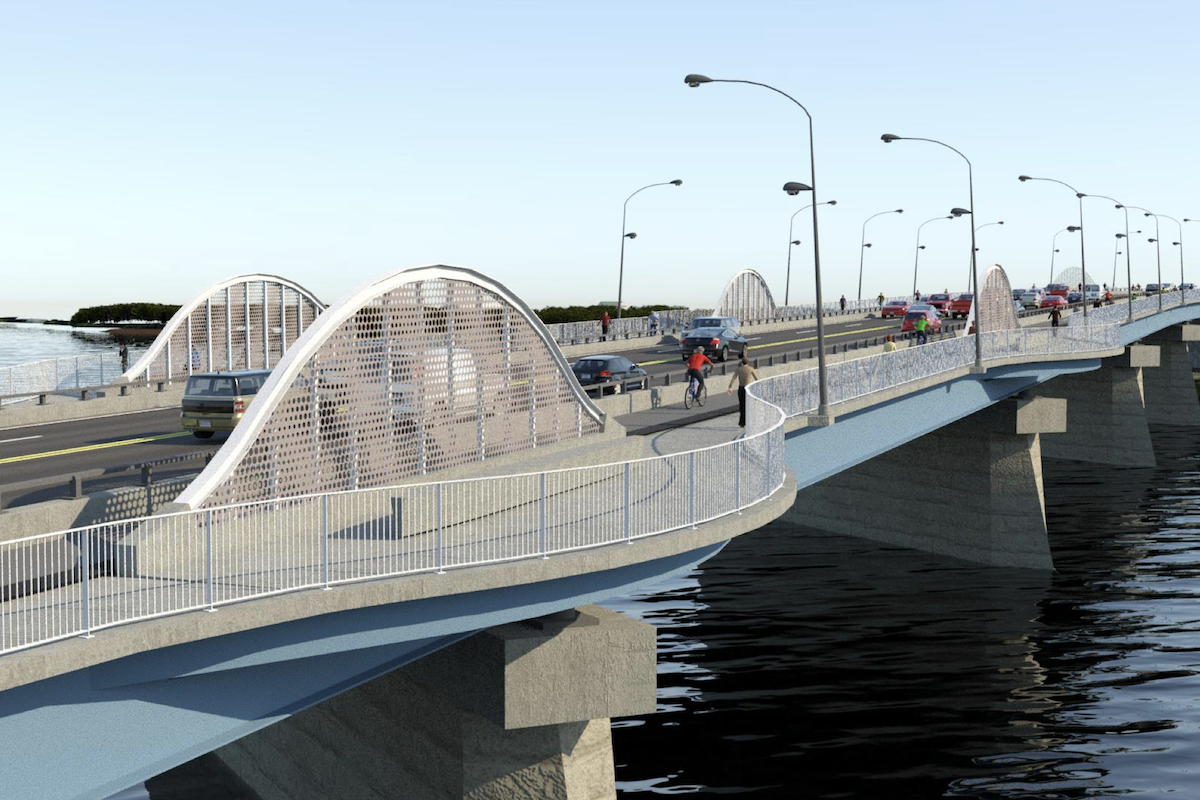Interstates I-40 and I-77 intersect in Statesville, which is west-central North Carolina. A critical component of North Carolina's highway system due to its proximity to multiple large cities, the intersection was constructed in the late 1960s. The average daily traffic count is 70,000 vehicles and is projected to reach 110,000 vehicles by 2035. The current configuration, which includes a cloverleaf interchange, has outlived its original purpose.
“A cloverleaf interchange slows traffic and with the current traffic counts as well as the projected growth, so it's not viable,” says Justin Johnson, a Resident Engineer for NCDOT.
Because there’s extensive work to be done in the area, NCDOT made it two separate projects. The first project was completed in 2018. The primary elements of the first project were widening I-40 from four to six lanes in each direction, revising the U.S. 21 interchange to a diverging diamond interchange and building collector-distributor roads to move traffic from local streets to high-capacity roads.
The current project involves work on 12 bridges. Bridges are being replaced, widened, and removed, with some bridges being added.

| Your local Case Construction Equipment Inc dealer |
|---|
| Beauregard Equipment |
| Monroe Tractor |
The main elements of the project include adding a lane to both I-77 and I-40. The new lane will stretch 3.5 miles on I-77 and 4 miles on I-40. Both currently have four-lane sections – two lanes each way. After the project, there will be as many as five lanes in each direction.
A partial turbine interchange is replacing the cloverleaf at I-40 and I-77. “The new interchange configuration will help to limit congestion as it allows a free flow of traffic,” Johnson says. “Drivers will be able to go from the collector-distributor roads to the interchange in a free-flowing safe path.”
Another major element of the project is the construction of a flyover bridge. The 2,300-foot bridge will span I-40, protected wetlands, and a creek.
Complicating the process has been the limited time when the roadways could be shut down. During one marathon weekend, the interchange was closed, and the team completed a significant amount of work. Tasks completed during that time include demolishing, reconstructing, and paving two roadway loops.
Hurley looks at the agreement to close the ramps for the weekend as an example of the success the team has had so far. “This presented a huge constructability challenge, but we worked together, along with the designer, to come up with a solution,” Hurley says. “We presented the work plan and noted the complications and the NCDOT added a day to the schedule.”

| Your local Wirtgen America dealer |
|---|
| WI Clark |
| United Construction & Forestry |
A concern of the DOT, notes Johnson, was reducing the impact on the driving public. The constant communication with the contractor has allowed them to minimize shutdowns.
Another challenge arose due to working over the wetlands. A long ramp movement spans the wetland and creek, and there are strict rules that regulate access. The team put barges down on the wetland rather than build a trestle or other more conventional options. “This option was more economical and drastically cut down on the environmental impact,” Johnson says.
Other access issues have led the team to use a 1,320-ton hydro crane. “We would typically use two crawler cranes for this part of the project but there is not sufficient access, which led us to the monster crane,” Hurley says.
Construction was originally expected to be complete in June 2022. However, the date has been pushed back with the current completion date yet to be determined.
The team has run into several challenges that have led to construction delays. The environmental issues noted above were time consuming. Delays have also arisen due to utilities. It only became clear that some utilities had to be relocated during construction.

| Your local Volvo Construction Equipment dealer |
|---|
| Tyler Equipment |
Finally, when constructed, I-77 impacted the historical Ramsey Farm that butts up again the project limits. The farm has been deemed a historical property. To expand the road, the state needs to acquire right of way. Because of the farm’s historical status, the acquisition process has been slow and complex.
Lane Construction was awarded the $260 million contract. The project is 100 percent state funded. Because it’s design-build, the contractor accepts all the associated risks. However, due to the historically high inflation levels, the governor of North Carolina has created a review process for state projects to increase funding. Hurley notes Lane is pursuing extra money to soften the impact of inflation.
When the project is complete, the critical area in the North Carolina highway system will be modernized and able to handle current and future traffic loads. Traffic will be able to flow freely through the interchange, alleviating buildups, increasing safety, and improving reliability.








































































